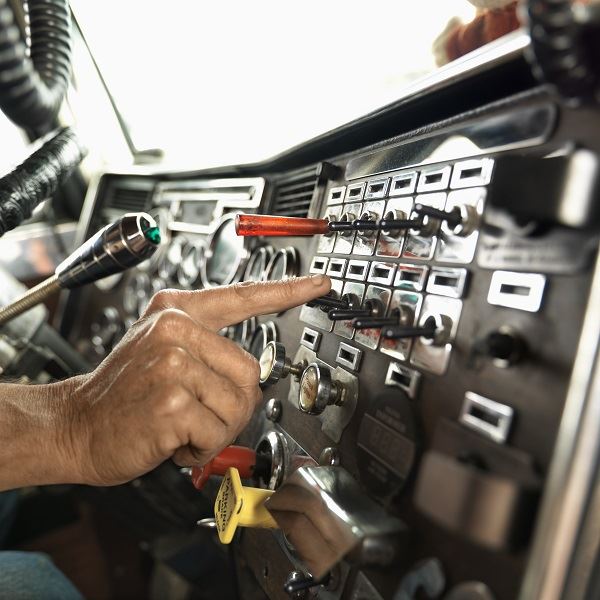
So, you’re using the automatic onboard recording device (AOBRD), which the electronic logging device (ELD) mandate allows until 15 December 2019, provided you were using it before 18 December 2017. The problem some fleet managers and independent truckers encounter is how to show they were using the AOBRD before that date. Although a purchase receipt would indicate that you bought it before the implementation date, it would not confirm it was in use.
Printed copies of logs produced by the AOBRD before the date would show they were used. Published policy letters mandating drivers to use the AOBRD prior to 18 December 2018 will also show their fleet meets the intent of the grandfather clause. Therefore, even though you are only required to maintain six months of logs, fleets and owner-operators using the AOBRD should keep those logs showing the use before the implementation date until 16 December 2019, or that they are fully-compliant with the ELD. The Federal Motor Carrier Safety Administration (FMCSA) FAQ site is an excellent source of answers about the ELD and AOBRD use.
FMCSA Data Q Challenge
Fleet managers and independent operators can challenge a roadside inspector’s “shortcoming” for the use of the AOBRD on the FMCSA Data Q website. However, keeping a copy of printed logs onboard will preclude that necessity. It might seem like just more paperwork to maintain, but having a folder marked, “AOBRD proof” onboard to show roadside inspectors will not only prove you’re grandfathered and compliant, but it will also show you are knowledgeable and organized. What’s more, you could avoid a five-point Compliance, Safety, and Accountability (CSA) point ELD-related violation.
Although a violation for AOBRD information not available is only one CSA severity point, an “AOBRD requirements not met” violation is five severity points and could be time-weighted up to three times, or 15 points if you had another CSA offense within the previous six months.
Very few inspectors are up-to-date on ELD and AOBRD use, so if you seem unprepared, they might write you up for an ELD-related violation. In many cases, when you hand a roadside inspector a folder or manila envelope with your completed driver vehicle inspection report (DVIR), previous seven days logs, permits, shipping documents, medical card, and current form and manner information up to the last change of duty, they will not dig for violations.
ELD Versus AOBRD
The major difference between an ELD and an AOBRD is that the AOBRD is not capable of transferring data to a roadside inspector and an ELD can. The 1988 AOBRD rule required “internal synchronization” but did not define it, and some other ELD requirements were either not addressed or not required.
The ELD rule mandates, “Integral synchronization interfacing with the CMV engine electronic control module (ECM), to automatically capture engine power status, vehicle motion status, miles driven, engine hours.” The AOBRD did not address Hours of Service (HOS) notifications, default driver duty status changes, were not tamper resistant, and did not address the Universal Coordinated Time (UTC) drift, whereas the ELD must not deviate more than ten minutes to remain compliant. Likewise, the FMCSA did not list certain models of the AOBRD as compliant as they do the ELD.
Kings County Trucker-Friendly Attorneys
When CDL holders receive a traffic ticket in Kings County, they know they must challenge the ticket in Hanford Traffic Court or face severe career ramifications. Even though there is a shortage of CDL holders nationwide, there is a 90 percent turnover rate at the top paying fleets.
This high turnover rate is due mainly to a zero-tolerance attitude in some fleet management offices. The thinking is that if a trucker gets convicted of a traffic violation in their private vehicle, they dodged a bullet. Their fleet insurance will not be affected, and if they terminate that driver now, they will not have to deal with a careless driver.
The best way to avoid a conviction is to fight the ticket. Bigger & Harman regularly represent clients in Hanford Traffic Court. Many of these are truckers who received a ticket on I-5. Just as Ajrob B. said on Yelp, “They were able to get my speeding ticket dismissed & not show on my driving record. I have a class A license & want to keep it clean for my job…If you’re ever in a pickle, give them a call.”
Call Bigger & Harman, (661) 349-9300, for assistance with any traffic ticket. They practice only traffic ticket law and use a flat rate fee to resolve tickets. Se habla Español 661.349.9755.
Send them an email, today attorney@biggerharmanlaw.com.
The Bigger & Harman Facebook page includes links to article about traffic law, legal advice and tips, and lane closures. You can read their bio and client feedback on Avvo and Nolo, two national attorney referral websites.
References:
The 2018 CA Commercial Driver Handbook .pdf
Thebalance.com A Guide to CSA Point Values and Transportation
The FMCSA Data Q website
The FMCSA website article,What are the Differences in the Technical Specifications in the 1988 AOBRD Rule (49 CFR 395.15) and the ELD Rule?
